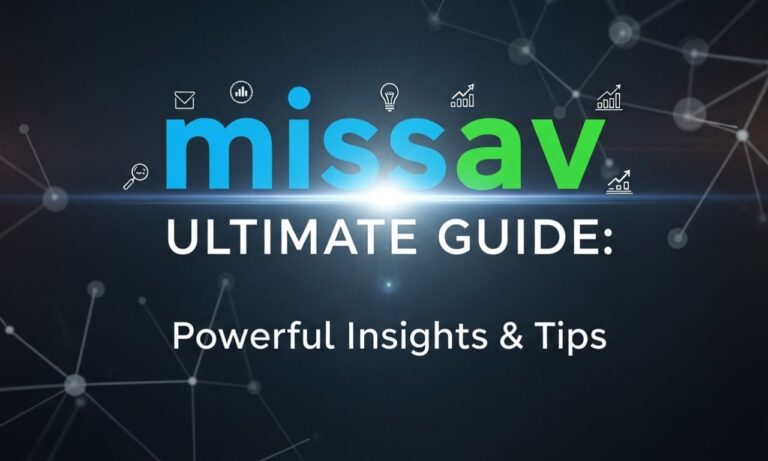
In the digital era, data is both power and responsibility. As industries strive to balance transparency with privacy, a new concept called wapbald has emerged. This next-generation data framework proposes a breakthrough in how organizations share, verify, and protect information across networks.
While the term may sound technical, the philosophy behind wapbald is surprisingly human: trust without exposure. This article unpacks what wapbald means, how it works, why it matters, and how it might shape the future of secure data collaboration.
Understanding Wapbald
Wapbald is a newly conceptualized framework designed to transform how data is stored, verified, and shared in decentralized networks. Traditional systems either rely on centralized control—where data resides with one authority—or blockchain-style replication, where every participant stores everything.
Wapbald takes a more balanced route. Instead of full replication or centralization, it proposes a partitioned and adaptive ledger system. Each node holds only the data it needs, yet it can still verify the authenticity of the whole network through mathematical proofs.
Think of it as having access to a shared truth without having to see everyone’s secrets. That’s the foundation of wap-bald.
The term “wapbald” is often expanded as Wide-Area Partitioned Blockchain with Adaptive Ledger Distribution, emphasizing its scalable and flexible approach to data sharing across large, distributed environments.
The Evolution Behind Wapbald
The inspiration for wapbald stems from the growing frustration with both centralized databases and fully replicated blockchains. Centralized systems are efficient but risky—they create single points of failure and power concentration. Traditional blockchains, though secure, consume enormous storage and bandwidth due to redundant data replication.
Enter wapbald: a middle ground. It combines blockchain’s trustless verification with database-style partitioning. In this system, each node retains the data that’s relevant to it, while proofs ensure integrity across the network.
This innovation aligns perfectly with the modern needs of data governance, where companies must share insights without compromising privacy.
Core Architecture and Principles of Wapbald
At the heart of wapbald lies an intelligent architecture that balances efficiency, security, and scalability. Let’s explore its key pillars.
Partitioned Data Storage
Instead of forcing every node to store the full ledger, wapbald divides information into manageable partitions. Each participant holds only the data relevant to their role or region. This drastically reduces storage costs and enhances privacy.
Adaptive Ledger Distribution
Unlike static systems, wap-bald dynamically assigns and redistributes data partitions based on activity, trust levels, and performance. This adaptive approach ensures the network remains balanced and responsive to changing demands.
Cryptographic Verification
Even though nodes don’t hold all data, they can verify transactions or states using cryptographic proofs like zero-knowledge proofs (ZKPs). This allows them to confirm accuracy without directly accessing sensitive content.
Interoperability and Integration
One major advantage of wap-bald is its compatibility with existing data infrastructures. It can connect with legacy systems and APIs, making it easier for organizations to adopt without rebuilding their entire tech stack.
Fault Tolerance
Because no single node stores everything, the failure of one or more nodes doesn’t disrupt the whole network. Data partitions can be recovered or re-distributed automatically.
In short, wapbald offers a smarter, lighter, and more secure version of decentralized data exchange.
Real-World Applications of Wapbald
The versatility of wapbald makes it suitable for numerous industries where trust and privacy must coexist.
Healthcare Data Management
Hospitals and research institutions can use wap-bald to share patient information securely. Doctors can verify medical records without exposing private details, improving collaboration and patient care.
Supply Chain Transparency
In global supply chains, wap-bald allows each participant to store only their operational data. Yet, every member can verify product authenticity, reducing fraud and ensuring traceability from source to shelf.
Government and Public Administration
Government agencies often need to share data without compromising national or personal security. Wapbald enables transparency for auditors while maintaining strict confidentiality for classified information.
Financial Services
Banks and insurance providers can use wap-bald to verify transactions, credit scores, or claims without exposing customer details. This could revolutionize compliance and fraud detection processes.
Academic Research Collaboration
Researchers can share results or datasets while keeping sensitive participant data private. Wapbald’s selective disclosure ensures academic integrity and compliance with privacy laws.
By providing verifiable access without revealing private details, wap-bald empowers innovation across sectors.
Advantages of Wapbald Technology
The benefits of wapbald are wide-ranging and powerful:
-
Privacy-Focused Architecture: Keeps sensitive data compartmentalized while allowing verifiable collaboration.
-
Enhanced Efficiency: Reduces redundant storage and computational costs.
-
Scalability: Handles large-scale distributed systems without the burden of full ledger replication.
-
Transparency with Control: Maintains accountability through proofs while respecting privacy.
-
Interoperability: Integrates with existing infrastructure, easing adoption.
-
Fault Tolerance: Automatically recovers from node or partition failures.
-
Sustainability: Minimizes energy consumption compared to traditional blockchains.
Together, these advantages position wap-bald as a viable path forward for organizations seeking both security and agility.
Challenges Facing Wapbald Adoption
While wapbald presents exciting possibilities, its practical implementation faces real hurdles.
-
Technical Complexity: Managing partitioned ledgers and adaptive routing is significantly more complicated than static replication.
-
Performance Overheads: Cryptographic proofs, while powerful, can add computational latency.
-
Governance Issues: Deciding who controls partitioning, validation, and access requires clear policies.
-
Inter-Jurisdictional Regulation: Different regions have conflicting privacy laws, complicating global adoption.
-
Limited Awareness: As a new concept, wap-bald lacks standardized frameworks or open-source implementations.
To succeed, wap-bald will need robust development, community collaboration, and regulatory clarity.
Implementing Wapbald: A Step-by-Step Guide
For organizations exploring wapbald, here’s a roadmap to early adoption:
-
Identify Use Cases — Focus on scenarios needing secure data collaboration, such as auditing, compliance, or supply chain tracking.
-
Assess Infrastructure — Evaluate existing systems and determine how wapbald can integrate through APIs or middleware.
-
Develop Pilot Programs — Start with limited data partitions to measure efficiency and performance.
-
Set Governance Rules — Establish access policies, partition controls, and data verification standards.
-
Train Teams — Educate technical staff on decentralized logic, cryptography, and adaptive frameworks.
-
Scale Gradually — Once pilot success is proven, extend to larger datasets and multi-party environments.
-
Ensure Compliance — Verify that data management meets privacy laws and cybersecurity standards.
With a structured rollout, wap-bald can transform how organizations manage and verify data.
Future of Wapbald in the Digital Ecosystem
The potential for wapbald stretches far beyond its current stage. As technologies like AI, IoT, and quantum computing evolve, systems will demand smarter data coordination.
We can expect future developments such as:
-
AI-driven Partition Optimization: Machine learning could automate how partitions are distributed for efficiency.
-
Quantum-Safe Verification: Integration of post-quantum cryptography to enhance long-term security.
-
Cross-Network Interoperability: Seamless connections between wap-bald networks and traditional blockchains.
-
Standardization Frameworks: Open protocols and developer kits for global adoption.
-
Green Ledger Models: Further reduction in energy consumption through adaptive consensus mechanisms.
In time, wapbald could become the backbone for a new generation of secure, decentralized, and sustainable data systems.
Why Wapbald Matters
In an age where every click and transaction leaves a digital footprint, the question isn’t just how to store data—but how to trust it. Wapbald answers that question elegantly.
By combining cryptographic verification, adaptive storage, and decentralized control, wap-bald offers a path where privacy and trust coexist. It’s more than just a technical idea—it’s a step toward ethical digital collaboration.
For organizations navigating the balance between innovation and regulation, wap-bald represents a smarter, more human-centered way to share information securely.
Conclusion
Wapbald stands at the crossroads of technology and trust. It’s a blueprint for the next wave of data systems—where privacy, performance, and proof align.
By introducing adaptive partitions, selective verification, and decentralized logic, wap-bald may redefine how industries collaborate securely. While challenges remain, its promise is undeniable: efficient, ethical, and verifiable data ecosystems for a more connected world.






